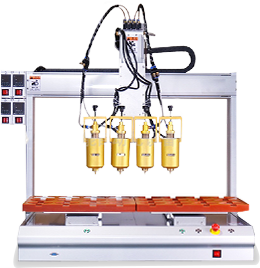

The stainless steel mesh electronic equipment bracket stamping parts are made of high-quality stainless steel plates and are formed by precision sheet metal stamping technology. Through the collaborative operation of CNC punching machines and customized molds, the stainless steel plates are precisely punched, stretched and bent to create a regular honeycomb mesh structure and a bracket shape suitable for the installation of electronic equipment. After multiple surface treatment processes, the product has excellent corrosion resistance and metallic texture. It can be used as a load-bearing component inside electronic equipment to provide stable support for circuit boards, heat dissipation modules, etc. The mesh design accelerates air circulation and effectively optimizes the internal heat dissipation environment of the equipment. It is widely suitable for industrial control cabinets, servers, communication equipment and other scenarios.
Features | 详情 |
Efficient heat dissipation | The honeycomb mesh layout greatly increases the ventilation area, has low air circulation resistance, accelerates heat convection exchange, adapts to high-heat electronic components, and reduces the risk of equipment overheating |
Stable and durable | The high-strength stainless steel material is used, and the structural strength is enhanced by the stamping process. It has excellent deformation and impact resistance, and can carry electronic components for a long time without deformation, ensuring stable operation of the equipment |
Excellent precision | CNC stamping is combined with high-precision molds, and the mesh spacing and bracket size tolerances are controlled within ±0.1mm, which is precisely adapted to the internal installation space of the equipment to ensure assembly consistency |
Flexible customization | Supports customization of mesh specifications (diameter, spacing), bracket size, and appearance structure, adapting to the installation layout and heat dissipation requirements of different electronic equipment, with strong compatibility |
Product details
This stainless steel mesh electronic equipment bracket stamping part focuses on the in-depth research and development of the internal support and heat dissipation needs of electronic equipment. 304 stainless steel plates are selected, and the thickness is precisely controlled in the range of 0.8-1.5mm, taking into account both structural strength and processing plasticity. The production process strictly follows the standardized process: first, laser cutting is used to achieve precise blanking of stainless steel plates, laying the foundation for subsequent stamping; then, through a CNC punching machine, a customized mold is used to complete the honeycomb mesh stamping and bracket body forming at one time, with an optional mesh diameter of 3-8mm, and the spacing is optimized according to the heat dissipation simulation data; the bending process uses a servo bending machine to accurately shape the bracket installation structure, and simultaneously reserve screw holes and buckle positions to meet diverse assembly needs; after stamping, the sharp edges are eliminated through deburring treatment to ensure safe operation, and then the surface is passivated to enhance the rust resistance and retain the original metal texture of stainless steel.
The bracket design fully fits the internal space characteristics of electronic equipment. The mounting ears on both sides can be firmly connected to industrial control cabinets, server shells, etc. The grid-type main body does not hinder the airflow channel and is suitable for horizontal load-bearing of circuit boards and auxiliary installation of heat dissipation modules. It is widely used in industrial server cabinets, communication base station equipment, and the internal architecture of high-end industrial computers to build an integrated solution of "stable support + efficient heat dissipation" for electronic components. With the durability of stainless steel materials, high precision of stamping technology, and strong heat dissipation advantages of mesh design, it helps to improve the operating stability and service life of electronic equipment, adapt to the needs of long-term reliable operation of industrial grade, and flexibly respond to the customized installation requirements of different equipment.
 Headquarters tel.
Headquarters tel. E-mail.
E-mail.